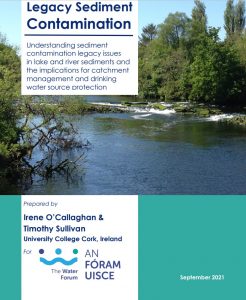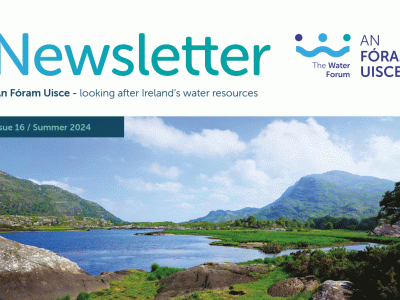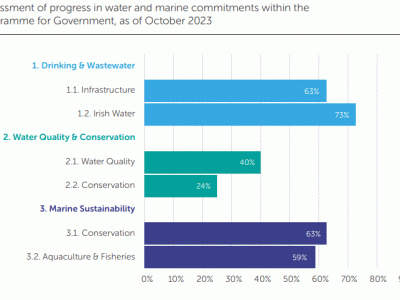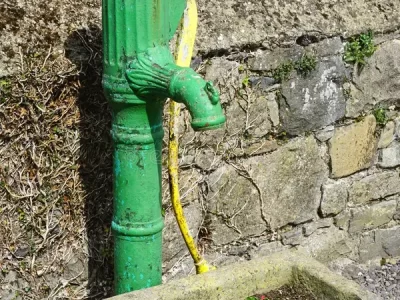An Early Career Research project report on Legacy Sediment Contamination – Understanding sediment contamination legacy issues in lake and river sediments and the implications for catchment management and drinking water source protection
The porous nature of sediments, as well as the accumulation of decomposing organic matter, promotes the entrapment of pollutants, allowing them to reside within the sediment for an extended time. Sedimentation occurs due to gravity forcing the contaminant particles to the bottom of the riverbed. The speed of sedimentation depends on a number of factors, including particle size and density. The formation of a sediment contamination pool relies on processes that increase the rate of sedimentation of the contaminant, such as pollutant-dependent properties (i.e. if they favour or inhibit aggregation), water physiochemistry-dependent (such as pH, temperature, light) and hydrology, where a slower flow allows more sedimentation (hence it occurs more readily in a lake than a fast flowing river). Sources of contamination to sediment include agricultural sources, historical mining activity, industrial activity, urbanisation and infrastructure, and shipping.
Legacy sediment contamination occurs when legacy sediment pollutants are resuspended back to the overlying water due to hydrological processes such as a storm event, anthropogenic disturbances such as dredging, or through continuous diffusion at the water-sediment interface, which can persist long after the original pollution source is removed. Climate change is expected to promote the release of legacy sediment contamination pools due to increased frequency and severity of flood events which help to resuspend and redistribute contaminants; drought events which increase the relative contribution of diffuse pollution; while freshwater acidification and increased temperatures both act to enhance the release process of contaminants from sediment.
The study finds that while a comprehensive picture of the presence of legacy sediment contamination does not exist, localized studies have confirmed its existence in affected areas such as from historic mining activities. A cast study is presented of a historic mine site in Silvermines, Co. Tipperary where riverbed sediments contain lead concentrations 6 orders of magnitude higher than Environmental Quality Standards advisory limits.
Legacy sediment contamination can come from a multitude of sources. Increased urbanization poses a significant threat, both through remobilization of contaminated sediments and contribution to future legacy contamination pools from road runoff, pharmaceuticals, and wastewater pollution.
Agricultural nutrient input determined by application rate, timing, topography, soil type, drainage and river bank make up can be a significant contributor to the ultimate concentrations of pollutants entering waterways. Good practice in nutrient management and the establishment of buffer zones will trap nutrients and help prevent bank erosion that would otherwise result in higher rates of sedimentation. Other potential sources have yet to be fully explored such as veterinary products and military land use.
The research highlighted the impact of new infrastructure, particularly the physical modification of rivers, pose a huge risk in the form of resuspension of contaminated sediments and recommends an assessment of the potential for impacts associated with legacy contamination to be included as part of any ecological impact assessment carried out.
One of the reports recommendations is that legacy sediment contamination needs to be dealt with at a catchment level as is a catchment-level issue. Sediment contamination thresholds need to be established and monitoring should be included in routine catchment management programmes, to determine the extent of legacy sediment contamination in Ireland.
Completed by: Irene O’Callaghan & Timothy Sullivan, University College Cork.




